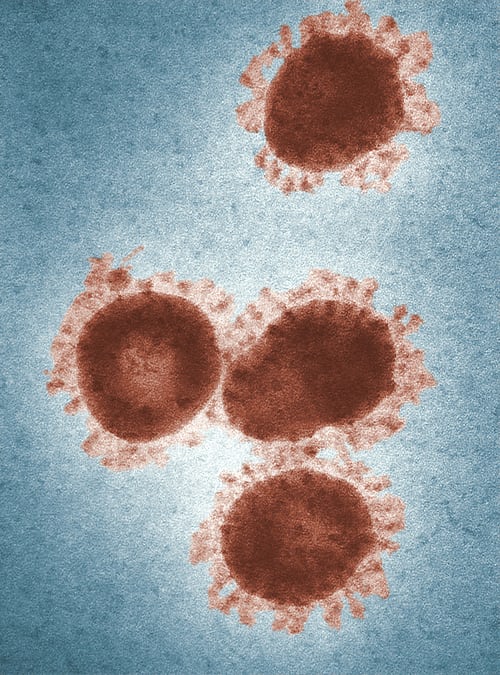Table of Contents
Coronavirus Symptoms Causes And Treatments
A Coronavirus is a type of familiar virus that causes an infection in the nose, sinuses, or upper throat. Most coronaviruses are not dangerous.

However, some types of coronaviruses are severe. About 858 people died from the Middle East Respiratory Syndrome (MERS), which first appeared in 2012 in Saudi Arabia and then in the other countries in the Middle East, Asia, Africa, and Europe. the first American was hospitalized by MERS in Indiana, and another case is reported in Florida. Both had just returned from Saudi Arabia.
But in early 2020, after an outbreak in December 2019 in China, the World Health Organization has identified a new type, the new coronavirus of 2019
Often a coronavirus causes symptoms of upper respiratory tract infection such as the stuffy nose, cough, and sore throat. You can treat them with resting and freely available medicines. Coronavirus can also cause middle ear infections in children.
What is Coronavirus?
Coronaviruses were the first to spot in the 1960s, but we don’t know where they come from. They derive their name from their crown shape. Sometimes, but not often, a coronavirus can infect both animals and humans.
Most coronaviruses spread in the same way as other viruses that cause colds: by infecting people who cough and sneeze, by touching the hands or face of an infected person, or by things like the buttons of the doors that infected people have touched.
Almost all people get a coronavirus infection at least once in their lives, probably as young children. In the United States, coronaviruses are more common in the fall and winter, but anyone can get a coronavirus infection at any time.
How dangerous is the coronavirus?
One of the worrying infections is the Middle East Respiratory Syndrome, caused by a type of coronavirus, which originated in 2012. MERS virus infection can cause fever, cough, and shortness of breath and is especially dangerous in the past or people with weakened immune systems or other diseases.
Symptoms
Common human coronaviruses, including types, generally cause mild to moderate upper respiratory tract diseases, such as the most common cold. Human gets infected with these viruses at some point in their lives. These diseases usually last only a short time. Symptoms can be. The stomas of most coronaviruses are similar to any other upper respiratory tract infection, such as a runny nose, cough, sore throat, and sometimes fever. And in most cases, you don’t know if you have a coronavirus or another cold-causing virus, such as rhinovirus
- Running nose
- Headache
- Cough
- Sore throat
- Fever
- A general feeling of discomfort
Human coronaviruses can sometimes cause lower respiratory tract diseases such as pneumonia or bronchitis. This is more common in people with cardiovascular disease, people with a weakened immune system, infants and older adults.
Diagnosis
Your doctor can order laboratory tests and respiratory samples and serum (part of your blood) to detect human coronaviruses. Laboratory tests are more likely to be used if you have a serious illness or if you suspect you have MERS.
If you experience symptoms, tell your health care provider about recent trips or contact with animals. The majority of MERS-CoV infections have been detected and the countries of the Arabian Peninsula. Therefore, reporting a travel history or contact with camels or camel products is very important when trying to diagnose MERS.
How to Treat?
Scientists are conscientious to understand the virus, and Chinese health authorities have placed all their genome and international databases. There are currently no approved antivirals for this specific coronavirus, so the treatment is supportive. For the sickest patients with this disease, specialized and aggressive care and an intensive care unit (IC) can save their lives.

Do I have to worry about getting this virus?
Unless you have been in close contact with someone who has the coronavirus, which at the moment usually means that a traveler from Wuhan, China, who actually has the virus is probably safe. For example, in the United States, only two cases of the virus have been confirmed so far, although this is likely to change.
Although we still do not understand the details of how this virus spreads, coronaviruses generally spread through drops that contain large particles that can usually be suspended in the air only three to six feet before they disappear. On the contrary, measles or chickenpox spread through smaller drops over much larger distances. Some coronaviruses are also found in the feces of certain individuals.
That is why it is likely that an infected person’s coughing or sneezing can transmit the virus.
The basic principles of infectious diseases are crucial to stop the spread of this virus. Wash your hands regularly. Cover the cough and sneeze with your inner elbow. Do not touch your eyes, nose or mouth with your hands. Stay away from people with signs of a respiratory infection, such as a runny nose, coughing, and sneezing.
Supplement Wisely: Boost Your Immune System with Evidence-Based Supplements
With the ongoing concerns about COVID-19, it’s tempting to turn to supplements that claim to prevent or treat the virus. However, these assertions are often misleading and unsubstantiated. According to the National Institutes of Health (NIH), there is no scientific evidence supporting the use of any supplement to prevent or treat COVID-19.
Nonetheless, some studies suggest that certain supplements may enhance your body’s general immune response. Here’s a closer look at some of these supplements:
Vitamin C
Vitamin C is well-known for its immune-boosting properties. A review of over 11,000 individuals found that taking 1,000–2,000 mg of vitamin C daily reduced the duration of colds by 8% in adults and 14% in children. However, it’s important to note that vitamin C supplementation did not prevent the onset of colds.
Vitamin D
Vitamin D is crucial for immune function. Deficiency in vitamin D may increase your risk of illness, so supplementing can help mitigate this risk. However, if you already have sufficient levels of vitamin D, taking additional supplements doesn’t seem to provide extra benefits.
Zinc
Zinc plays a vital role in immune health. A review involving 575 people with the common cold found that taking more than 75 mg of zinc per day reduced the duration of the cold by 33%. This suggests that zinc can be a valuable addition to your immune-support regimen.
Elderberry
Elderberry is often touted for its antiviral properties. A small review indicated that elderberry might reduce the symptoms of viral upper respiratory infections. However, more extensive research is needed to confirm these findings.
Echinacea
Echinacea is a popular herb used to fight colds. In a study of over 700 people, those who took echinacea recovered from colds slightly faster than those who received a placebo or no treatment. However, the difference was not significant.
Garlic
Garlic is known for its antimicrobial properties. A high-quality, 12-week study involving 146 participants found that garlic supplementation reduced the incidence of the common cold by about 30%. Despite these promising results, further research is necessary.
While these supplements have shown potential in boosting general immune health, it’s important to understand that they are not proven to be effective against COVID-19. Additionally, the supplement industry is not regulated by the Food and Drug Administration (FDA), making it susceptible to mislabeling and false claims.
To ensure you are getting safe and effective products, purchase supplements that have been independently tested by third-party organizations like United States Pharmacopeia (USP), NSF International, and ConsumerLab. Always consult with a healthcare provider before starting any new supplement regimen.
In summary, while certain supplements may help strengthen your immune system, they should not be relied upon to prevent or treat COVID-19. Make informed choices and prioritize evide
